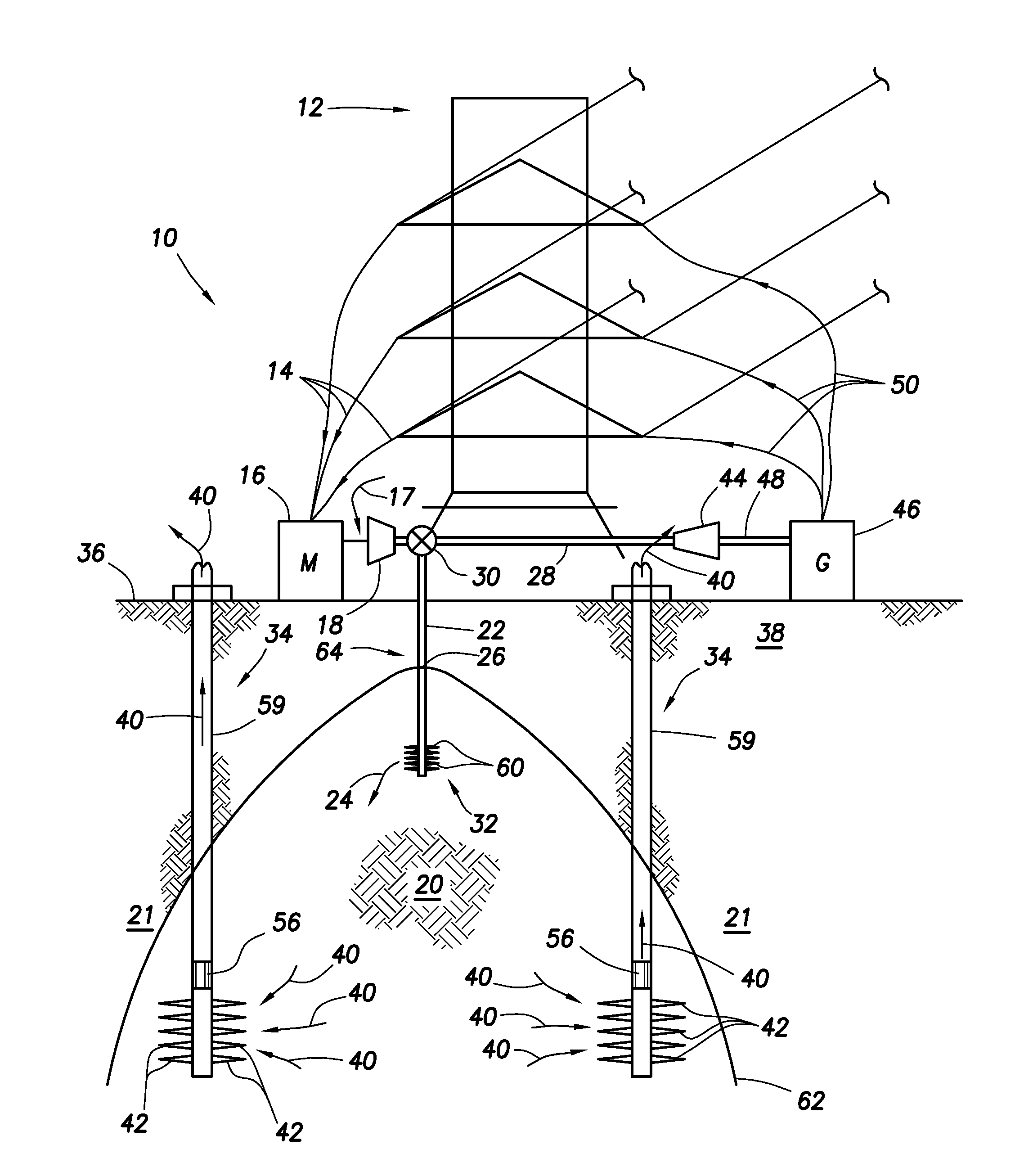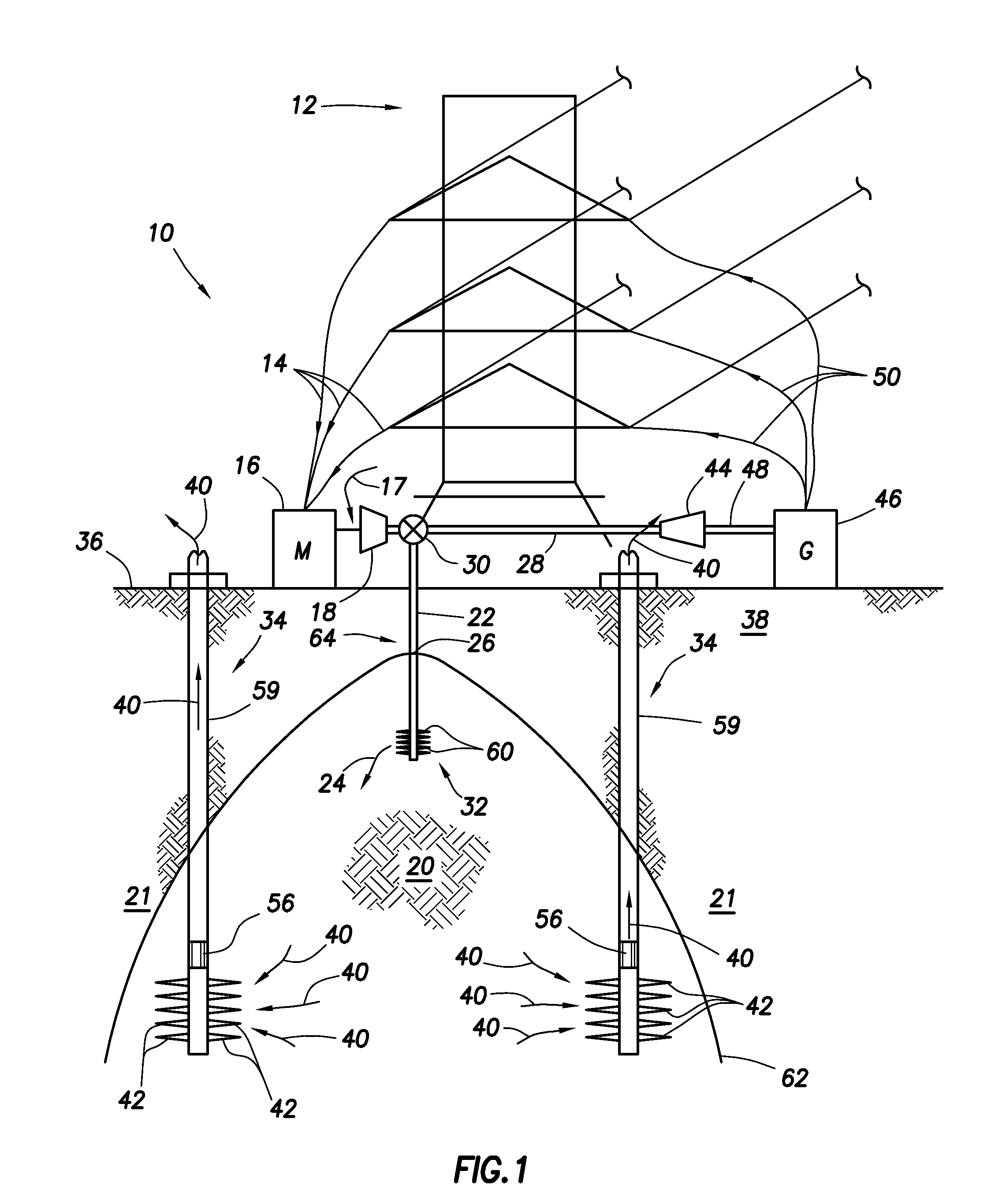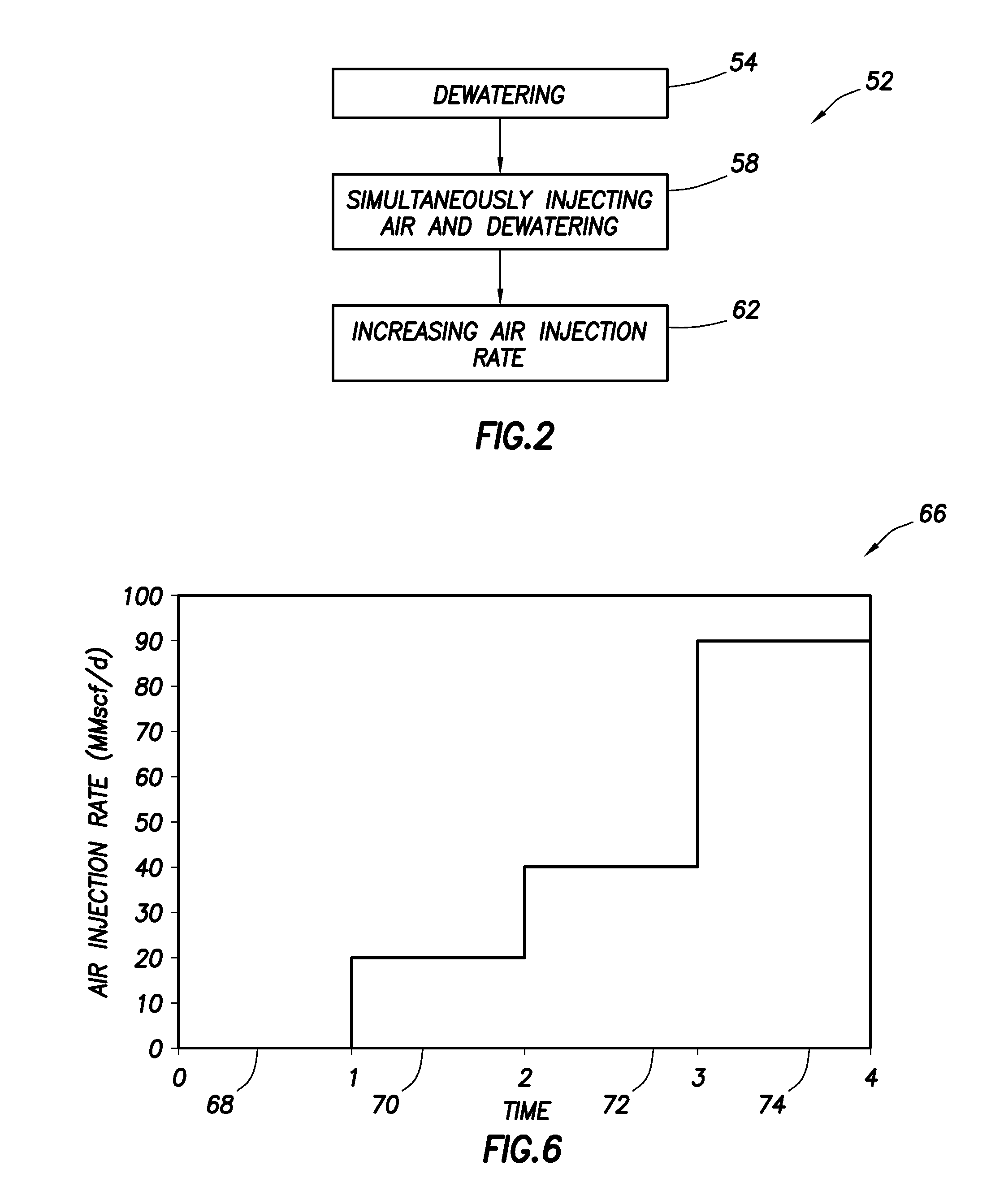Method for storing compressed air in porous subsurface locations
a technology of porous subsurface and compressed air, which is applied in the direction of storage devices, mining structures, machines/engines, etc., can solve the problems of limited quantity of subterranean salt caverns and physical locations of such subterranean salt caverns not always proxima
- Summary
- Abstract
- Description
- Claims
- Application Information
AI Technical Summary
Benefits of technology
Problems solved by technology
Method used
Image
Examples
Embodiment Construction
[0016]Turning to FIGS. 1-8 a detailed description of the preferred arrangements of the present disclosure will be provided. While various embodiments are described and illustrated, the scope of the disclosure is not intended to be limited by such description and illustrations, but only by the scope of the claims that follow.
[0017]Compressed Air Energy Storage (CAES) utilizes off-peak electrical energy as a first energy form to generate and store a second energy form, which may be used at a later time to generate electrical energy when electrical energy demand is relatively high and more expensive than the cost of off-peak electrical energy. With reference to FIG. 1, a CAES system 10 may utilize an electrical power line 12 from which electrical energy may be supplied through one or more electrical down wires 14 to a motor 16. Electricity may be diverted or utilized from a power grid, which power line 12 may be part of and integrally linked. Motor 16 may utilize electricity from power...
PUM
 Login to View More
Login to View More Abstract
Description
Claims
Application Information
 Login to View More
Login to View More - R&D
- Intellectual Property
- Life Sciences
- Materials
- Tech Scout
- Unparalleled Data Quality
- Higher Quality Content
- 60% Fewer Hallucinations
Browse by: Latest US Patents, China's latest patents, Technical Efficacy Thesaurus, Application Domain, Technology Topic, Popular Technical Reports.
© 2025 PatSnap. All rights reserved.Legal|Privacy policy|Modern Slavery Act Transparency Statement|Sitemap|About US| Contact US: help@patsnap.com



